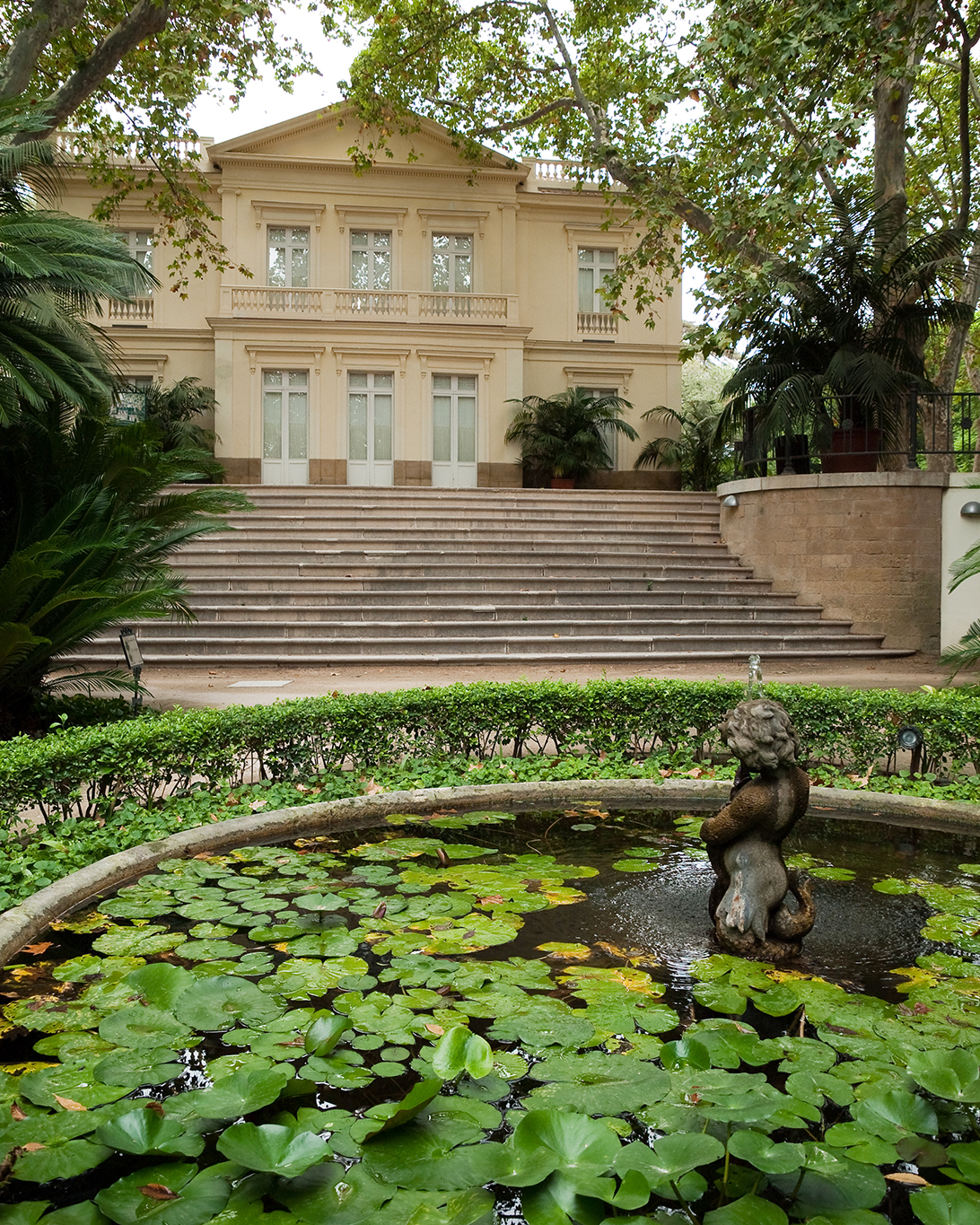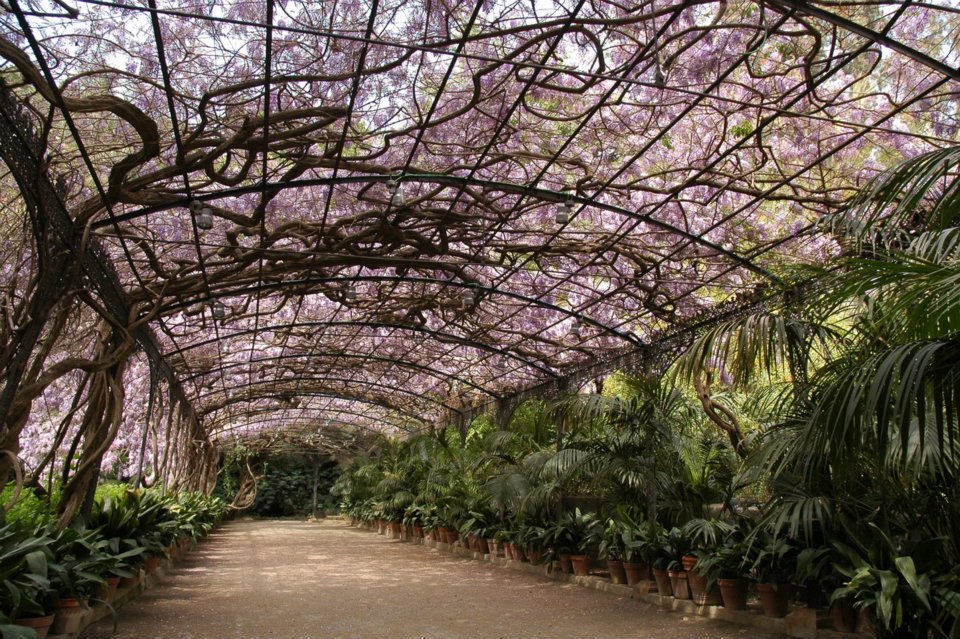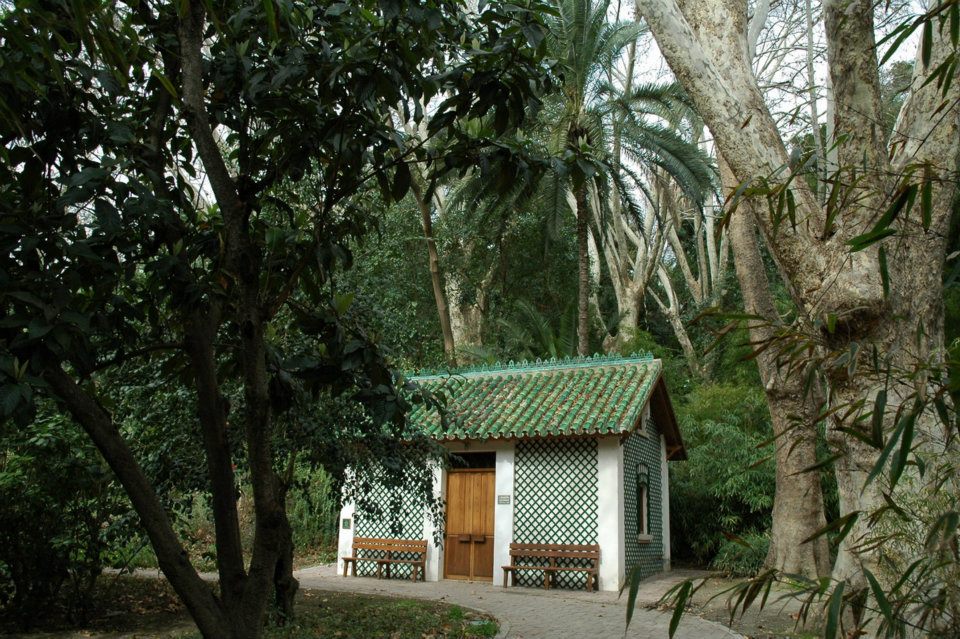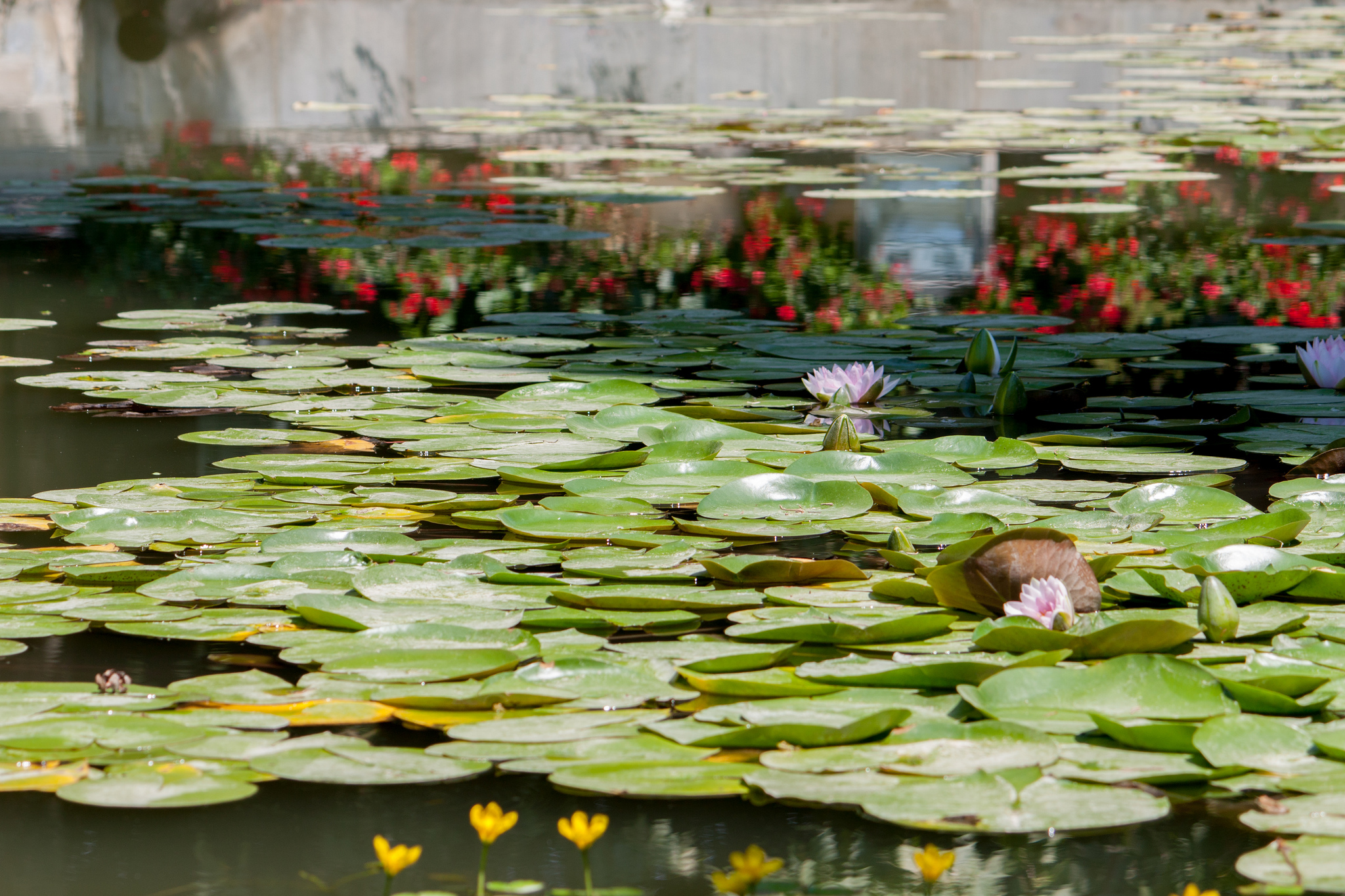A Hidden Oasis at Malaga’s La Concepción Botanical Gardens
Andalusia can be dusty and scorching hot, so a blooming oasis right in the middle of the mountains might come as an unexpected surprise.
Just outside the center of Málaga, Spain, La Concepción Botanical Gardens, founded in 1885, is made up of a composite of estates crisscrossed with paths that weave through landscaped areas– including bamboo forests and citrus groves populated with rabbits, foxes, minnows, and turtles (depending on the season).
La Concepción is best known for its efforts in historic preservation and assemblage of flora. It’s a museum of plants of some sort, an intersection of botanical, cultural, and historical elements, according to Belén Verdú Valiente, who works for La Concepción’s research department. “Visitors admire its beauty, elegance, and the great diversity of remarkable plants.”
On the sprawling grounds, visitors stumble across many unexpected treasures: an iron pergola covered with lavender-hued wisteria, a scattering of ancient ruins, and a classical-style circular bench for contemplation. The sheer acreage and number of paths that meander through the gardens are too numerous to count. The best strategy for exploration is to pick a direction, head out, and get lost.
A good introduction to the gardens through the “Around the World in 80 Trees” collection. It’s a section that’s “paved with reddish stones with plants on both sides, ordered by continents,”– to use Verdú Valiente’s words. “Along this route, you can see eighty arboreal specimens, approximately along an imaginary and sinuous path around the world.” This trajectory is appropriate as global travel was a key inspiration for the original founders, the Marquis and Marchioness of the House of Loring, Jorge Loring Oyarzabal, and Amalia Heredia Livermore, who dreamt up the idea of the La Concepción botanical gardens based on their honeymoon voyages around Europe.
The journey begins in North America with the deciduous hackberry tree from Canada, then continues with the Catalpa tree, with its white flower clusters that grow natively in the Southern United States. Turn left and you’re in Asia, with specimens such as black mulberry, gingko biloba, and purple orchid in sight.
Further east, one is apt to another world tour of a different sort. La Concepción’s “Map Mundi de palmeras,” is based on the same idea, only with a boulevard of palms. Indeed, it’s an encyclopedia of 50-some species from five continents—America, Asia, Africa, Europe. and Australia. It’s far from a heterogenous grove, and a glance around will produce wonderment for distinct and rare species such as the magnificent Chilean palm, a seven-branched giant date palm, and the gray-leafed Bismarck.
Anybody who’s been to Malaga has probably sampled its sweet fortified wines, which date back to the Phoenicians (and currently sold under three appellations). Just beyond the palms, the vineyards cultivate more than 20 varieties of ancient grapes–Moscatel, Ximenez, and Airen, for example. Some vines are more than a century old, others are strains that existed before the phylloxera swept through Europe (and which are no longer used in today’s harvests). Collectively, these vines are a record the preserves the Malaga province’s cultural heritage.
Because of most of the flora at La Concepción is tropical and sub-tropical, the appearance of the garden doesn’t change much year round— it’s typically green no matter the season. Despite the garden’s serious research mission, however, it’s also a place that’s very much alive in the spirit of the Andalusians. June and July are the special times of the year when aquatic plants are in bloom (picture giant water lilies blooming on top of ponds). In the evenings, the story of the garden is told through theatrical shows with lights, and there are also numerous greenhouses and education centers that highlight important work the garden is doing, which also includes the preservation of a hillside succulent collection and a project that studies fragile, near-extinct species to optimize the conditions for their growth so that future generations can see them in all their glory.
***
La Concepción is open year round. Admission to the garden is € 5.20 (and it’s free on Sunday afternoons).






































